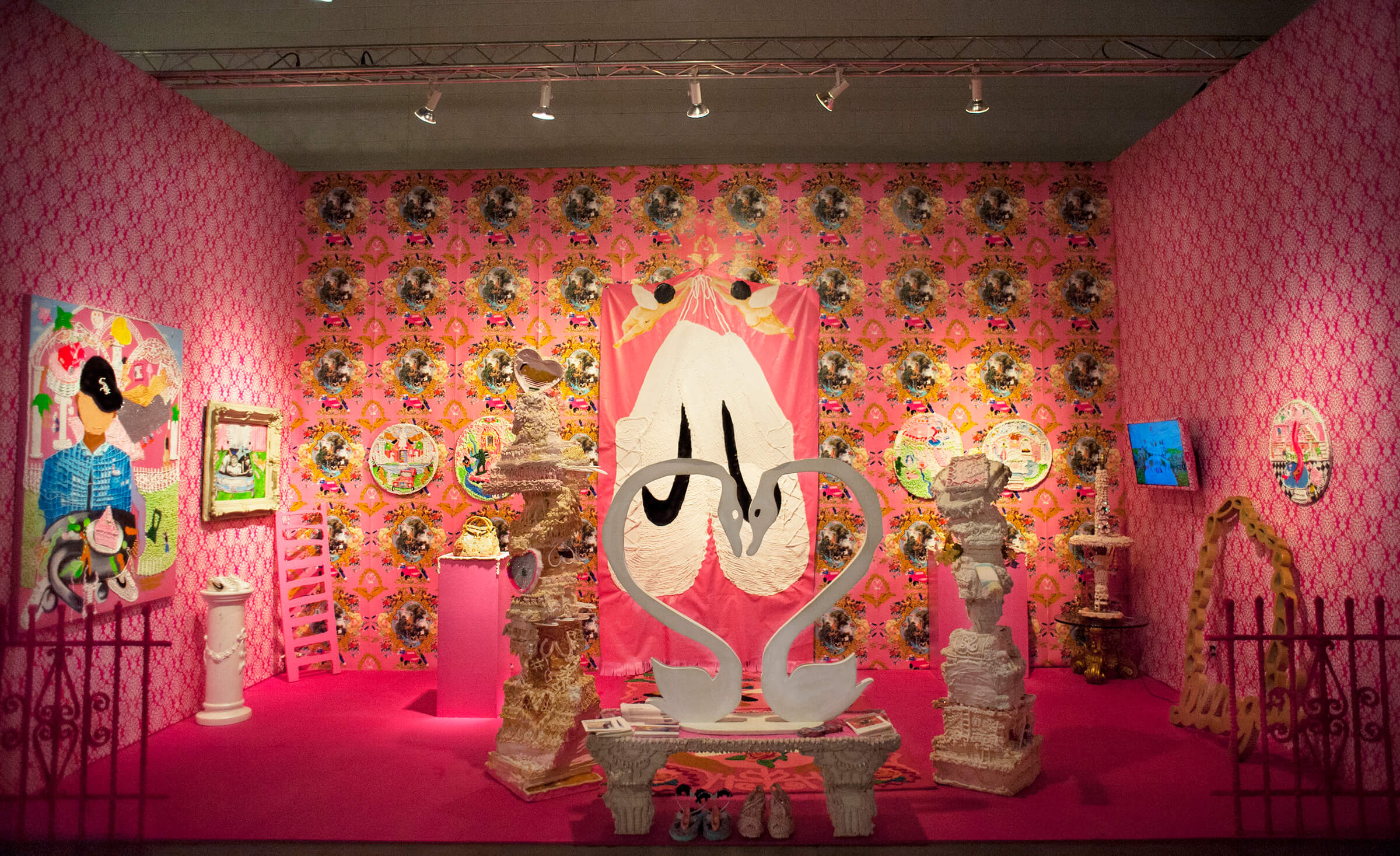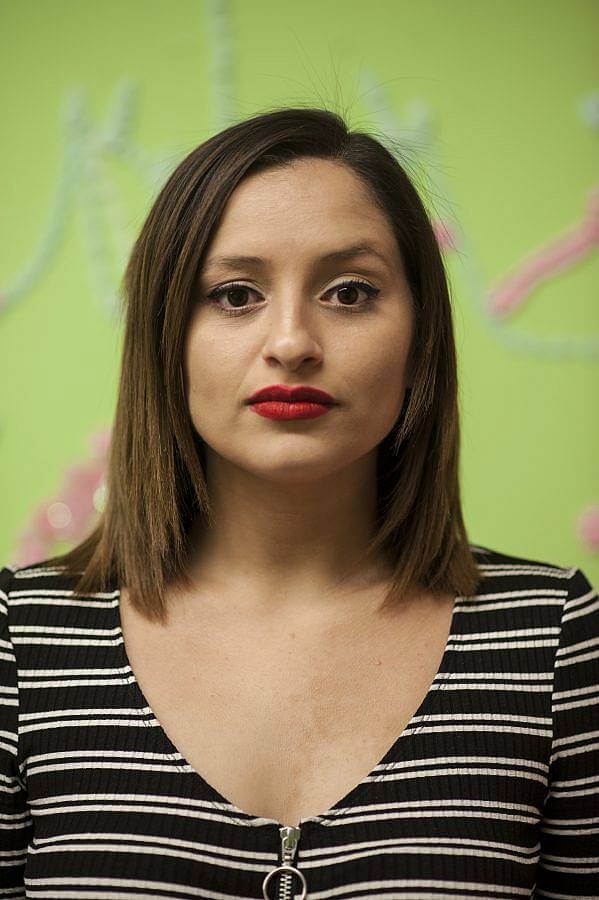Tell us a little bit about yourself and what you do. I am an installation based artist using frosting as a medium to understand America. I am a daughter of immigrant parents from Mexico, I am the youngest of five and I love Hello Kitty. I have always been fascinated with celebrations and cakes, and as an artist I am able to explore these childhood interests of celebrations in order to understand myself and my family history. When I’m not in my studio I’m working as an educator at the National Museum of Mexican Art.

What are some recent, upcoming or current projects you are working on? I’m currently working on a new body of work using ceramics inspired by 18th century Medieval sugar sculptures presented at lavish dinners and celebrations. I’m really interested in the relationship of sugar (a component of cake) to porcelain and its relationship to colonialism in Mexico. I have upcoming solo shows and group shows that I’m super excited to be a part of, being able to share my work among artists I look up to is humbling. I currently have work in LA for a group show, A Universal History of Infamy, at LACMA’s Charles White Gallery for Pacific Standard Time curated by Vincent Ramos. It’s a really great group of artists who have influenced/inspired my work, being a part of the show feels really groundbreaking for my artistic career. I am also showing work at ALSO gallery in LA for, Barrier. In Chicago, I will be showing work at Gallery 400 for, Out of Easy Reach, curated by Allison Glenn, opening April 26. The show is featuring all women of color who are using abstraction, the list of artists in the show is amazing. I can’t believe I get to be in a show with fellow art crushes like Shinique Smith, 2018 feels really magical already.
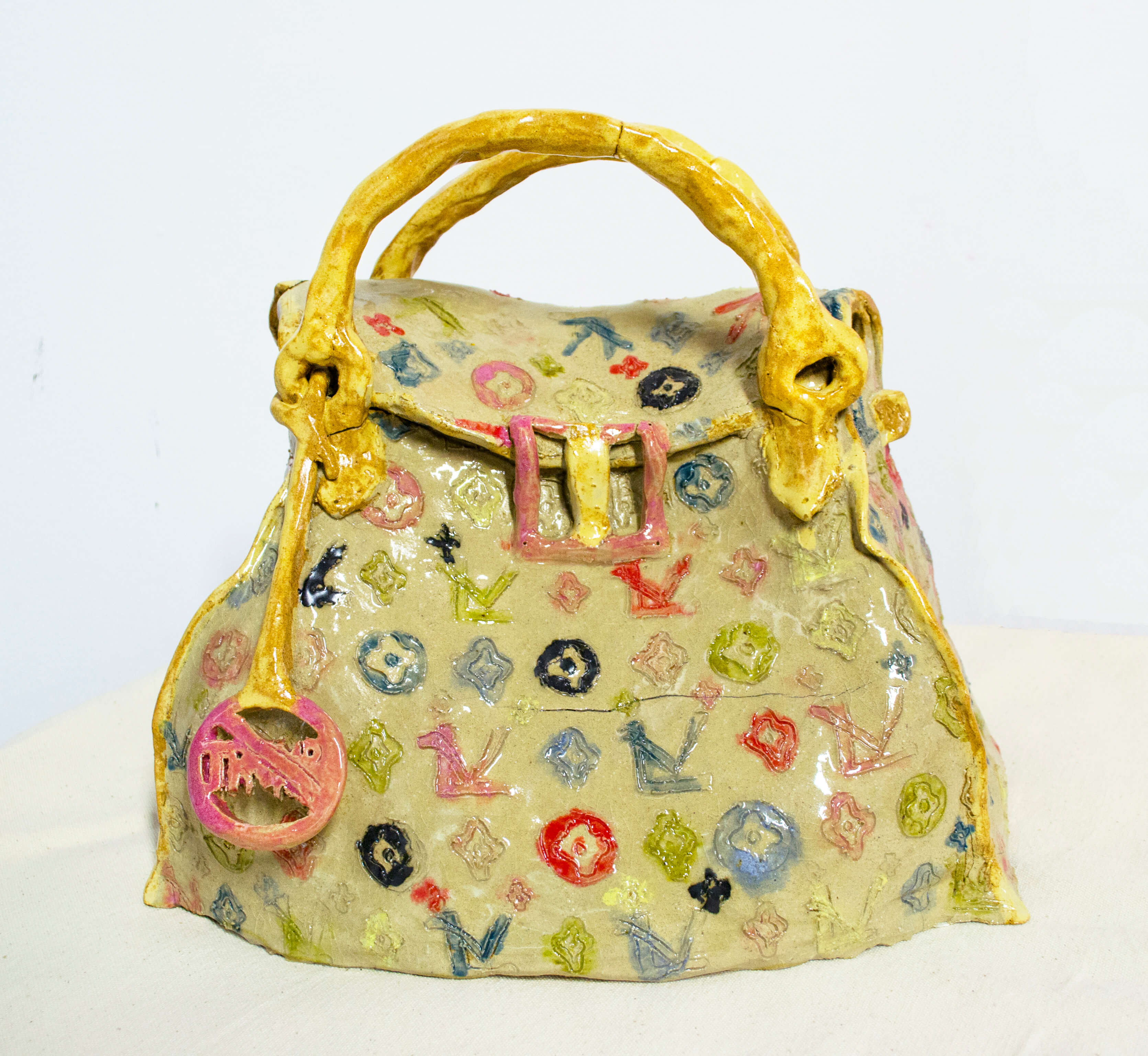
What materials do you use in your work and what is your process like? I use a variety of materials ranging from paint to frosting and everything in between. It really depends on the impermanence of the work and if I am making a component of the installation or decorating the interior of an installation. My material of choice is frosting, so every other material I use. like paint and plaster, is attempting to become frosting. Using paint and plaster in piping bags allows me to really forget about conventional art making materials and simply create line making without feeling restrained, it’s really freeing, but also labor intensive. I always begin with inserting paint or frosting into a piping bag and begin making lines. Through the process of adding, eventually I get to a point where I feel like the line making has accomplished filling and/or creating its own world-that’s when the materials really do the magic for me.
What is influencing your work right now? Right now I’m obsessing over 18th century sugar sculptures, Nike cortez, and François Boucher porcelain. Also trying to stay positive in this nightmare of a country post election day.
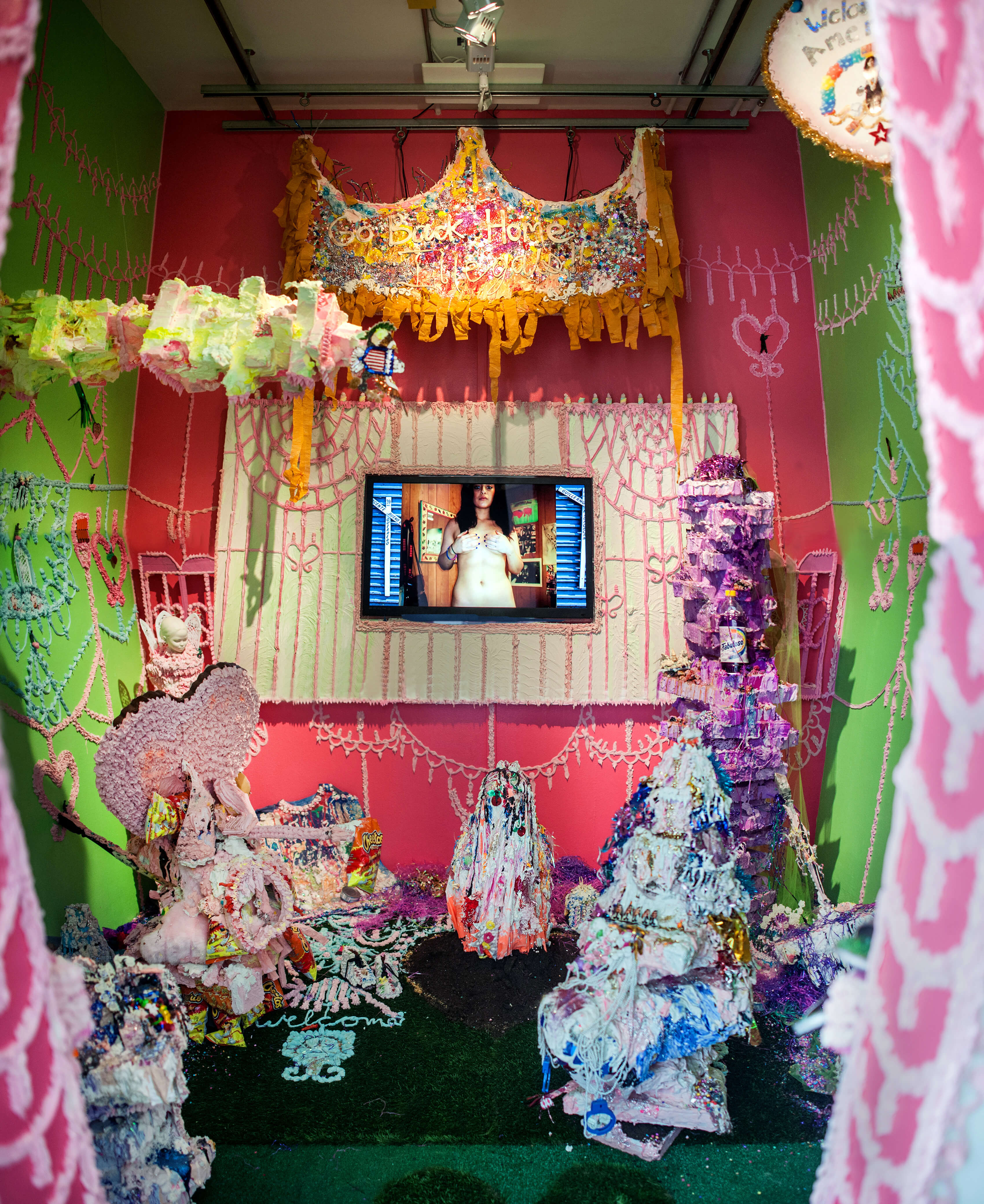
What is one of the bigger challenges you and/or other artists are struggling with these days and how do you see it developing? I feel like I am faced with gender obstacles and also reminding myself art is important in the age of Trump. I am exhausted of hearing about instances that women of color artists are being made to feel less than their counterparts due to misogyny etc. I am exhausted, it needs to stop, we are as good as our art male colleagues even with our vaginas or without.
Can you explain the challenges and importance of working as an artist in the current political climate? It’s an important responsibility to be an artist right now, art can say something while the world feels like it’s collapsing with racial inequalities and an evil man in power. Somedays now more than ever I question the importance of art and then I’m always reminded that art is so powerful and that even in its smallest capacity it can make an impact. I just think right now everything feels so hard and so whether we are talking about art or not we are gonna be questioning our existence etc. It’s always been an inspiration of mine to be proud of my dad’s crossing and to share it with the world whether through a conversation or art. It happened to be art and it feels just right. During this political time it’s important for me to keep making the work I have been doing for the past years. Five years ago I didn’t know this presidency would occur and that the nightmares of hearing violent agressions about immigrants would be displayed on the news, or that my immigrant family would be compared to rapists etc. It feels violating and ever so more important to share TRUE narratives of real immigrant stories and the treacherous sacrifices that have been made to be an American citizen. I want to share my dad’s story and my story in order to create a space for a history that often gets untold. My dad’s stories were the first museums and art I ever heard/saw.
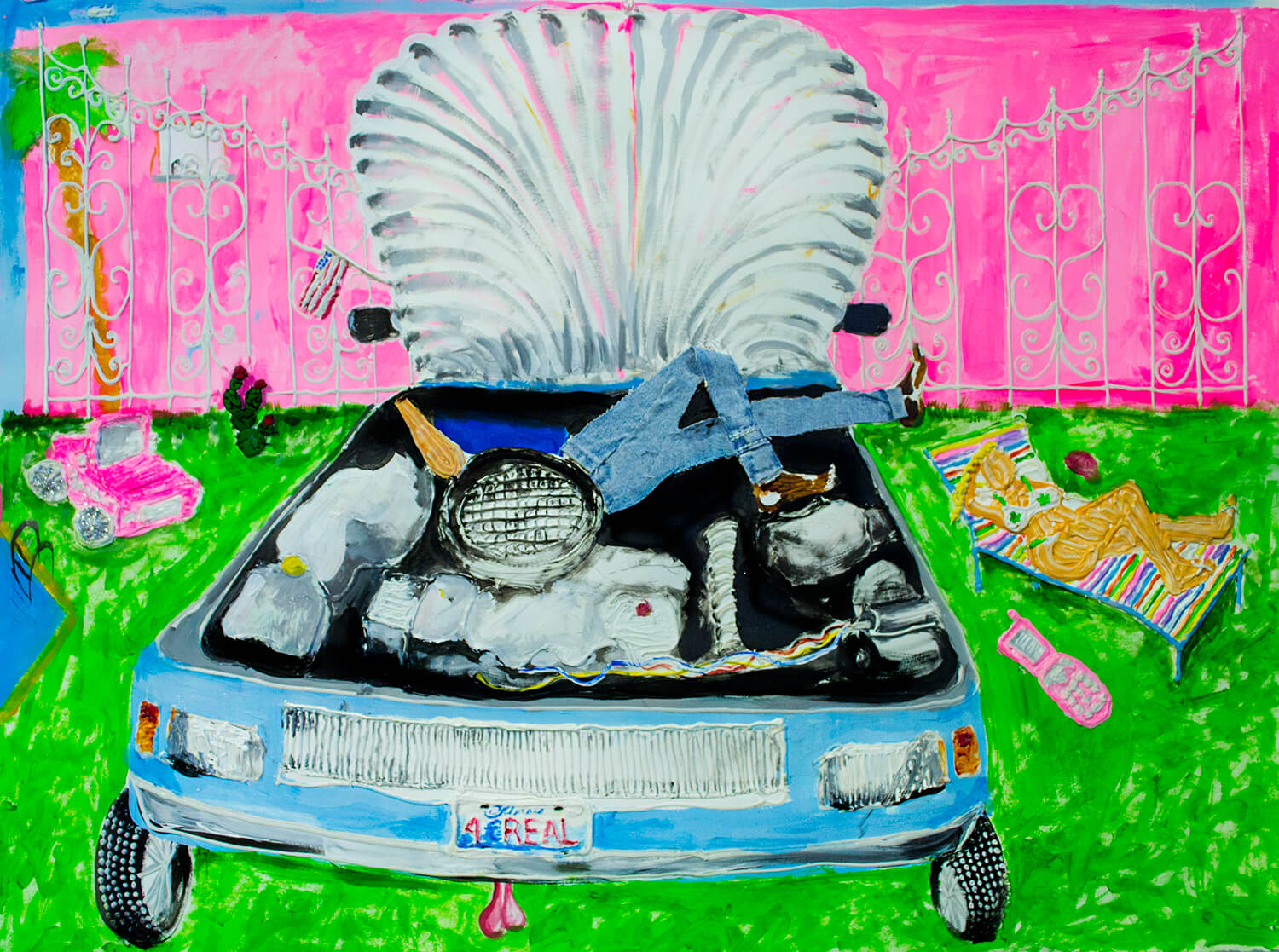
Your work has a relationship between visual culture and activist practice. Do you see your work as activism? And if so, what is the importance of visual art within that space. I believe writing a political view with a material is activist in itself, putting a thought/idea into the world is activist. In that sense, I believe my work is activist. I am saying my beliefs about this country, colonialism, immigration, America (Mex+U.S.), the drug cartels, being a womxn, why womxn make cakes (gendered labor) that is activist.
Your installations have a very specific and inordinate feminine, whimsy presence. What inspires this aesthetic? The aesthetic is inspired by the gendered labor of cake decorating and the expected likeness of “feminine” gendered colors. I use “feminine” prescribed colors like pinks etc. excessively to defy their power on gender and critique oppressive histories. At large the aesthetic is inspired by the Baroque-ness displayed in the interior of my parents home, catholic churches, and quinceaneras. The excessiveness in my materials displays the excessiveness that is attempted to create with everyday mundane items inside immigrant homes in order to question what is luxury and how that relates to the monetary wealth associated with the American Dream.
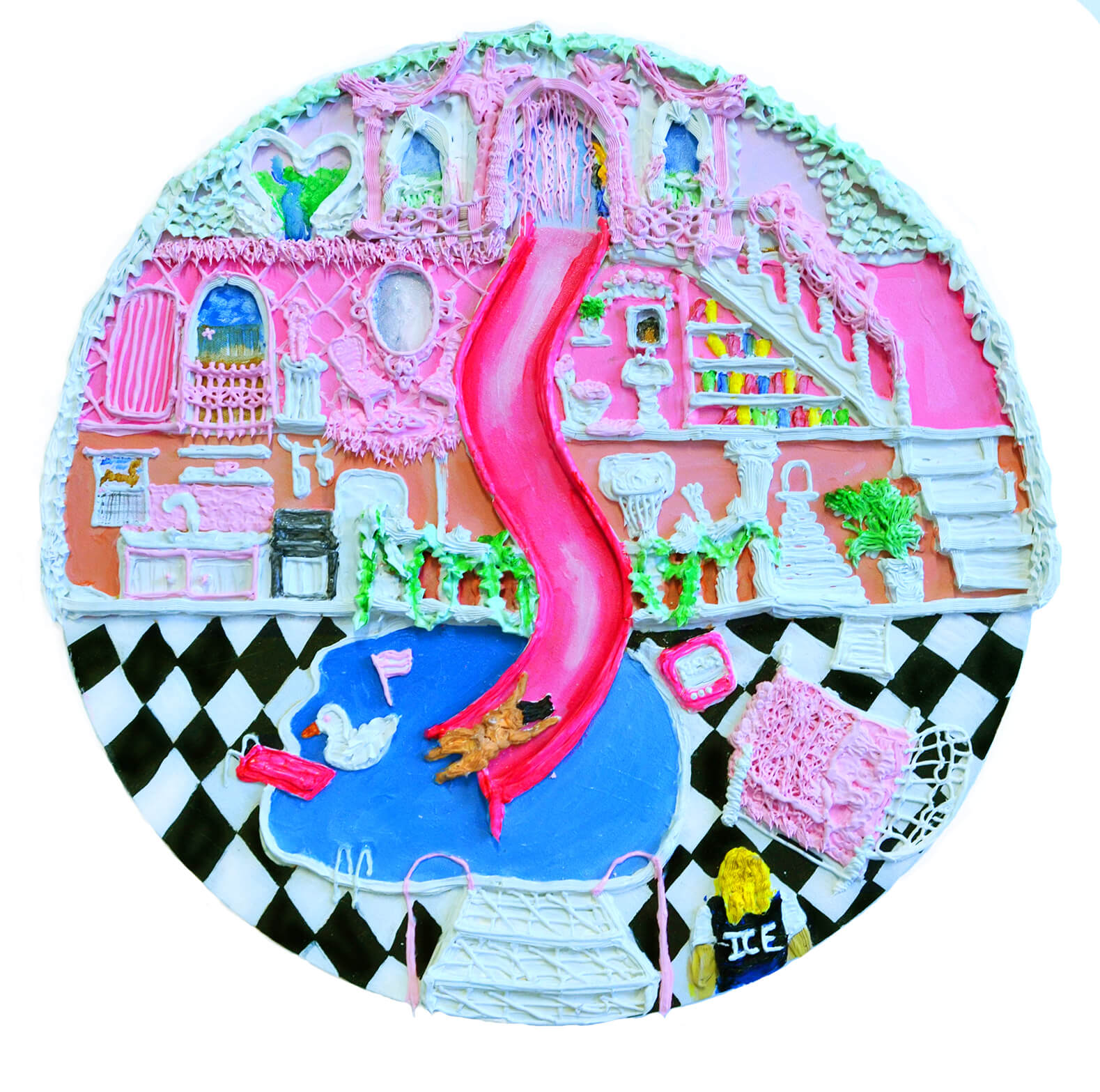
What’s your absolute favorite place in the city/the world to be? Mexico. I grew up between the U.S. and Jerez, Zacatecas for most of my childhood and attended grade school in Jerez. Being able to experience growing up in both spaces gave me a visual culture/language that I’m so thankful for, to understand tweety bird in both spaces is integral in understanding transnationalism and the influence of the U.S. and its constant presence in Mexico. It was really amazing to be able to experience where my parents grew up and see how that has impacted them through it impacting me. Jerez is my favorite place in the world because its where I realized I was Mexican too, when I visited and saw that it was half of me, it made me feel like I was 50% home.
Describe your current studio or workspace. I’m currently working between two spaces, my actual studio and a community ceramic studio. It’s been refreshing to be able to switch gears between the two and feel excited about being in both spaces. I share a studio space with an amazing group of artists, being part of a supportive community of hardworking people.
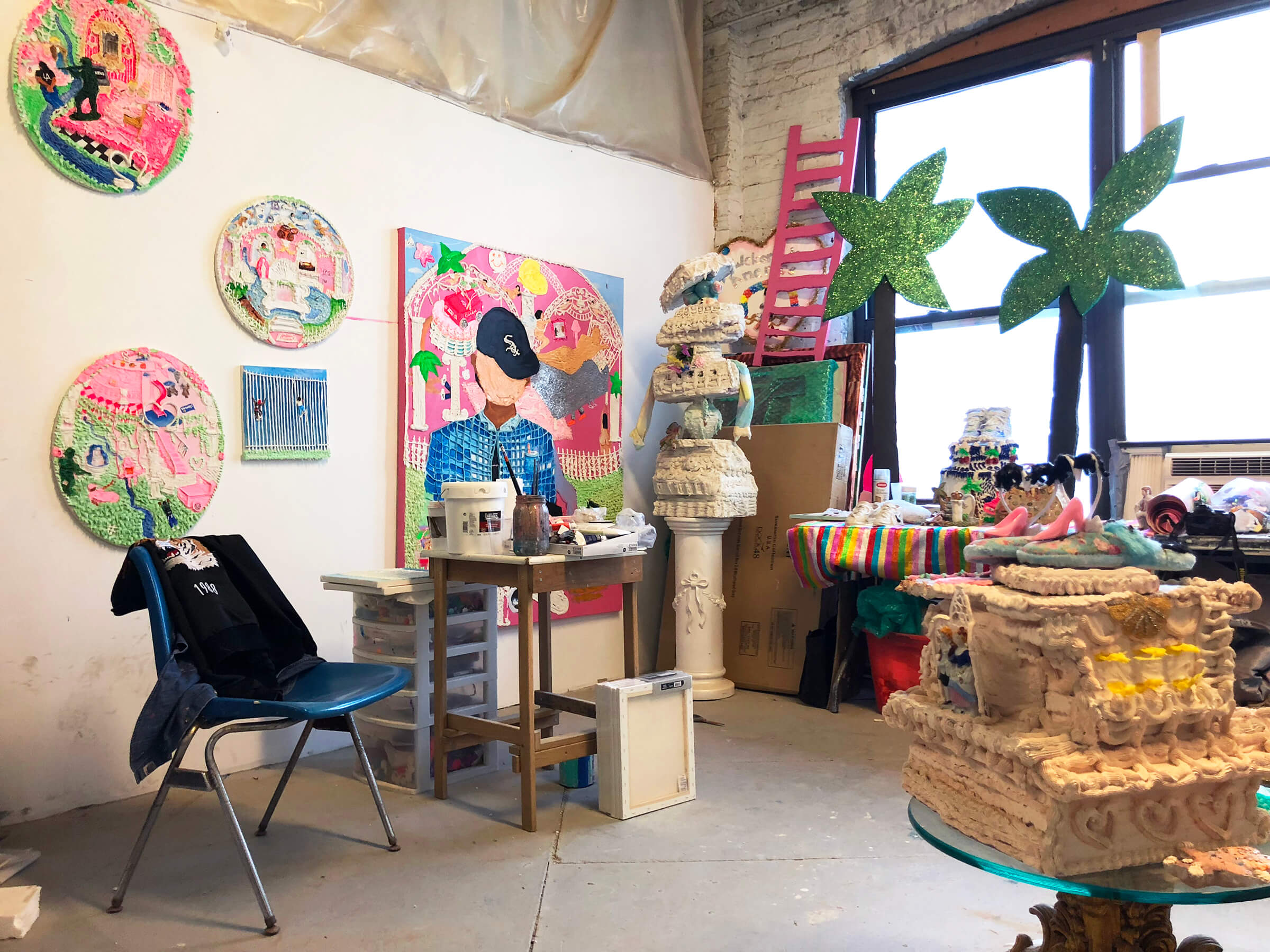
What was the last exhibition you saw that stuck out to you? Eduardo Sarabia, Drifting on a Dream, at The Mistake Room in LA blew my mind. His work is so powerful in its material vastness and politically driven content. It was amazing to see his ceramic work in person, the details in his work are meticulous. He leaves feeling like I was a part of a moment in his methodology for a second, I lived in it, that’s what art should do, time travel.
What do you want a viewer to walk away with after experiencing your work? I want the viewer to feel like they have learned something about the American Dream, to feel like they were a part of it for a moment. And when they walk away, I want them to miss it or feel like they can’t recreate the feeling of being in that space in order to understand the impossibility of it for immigrants.
